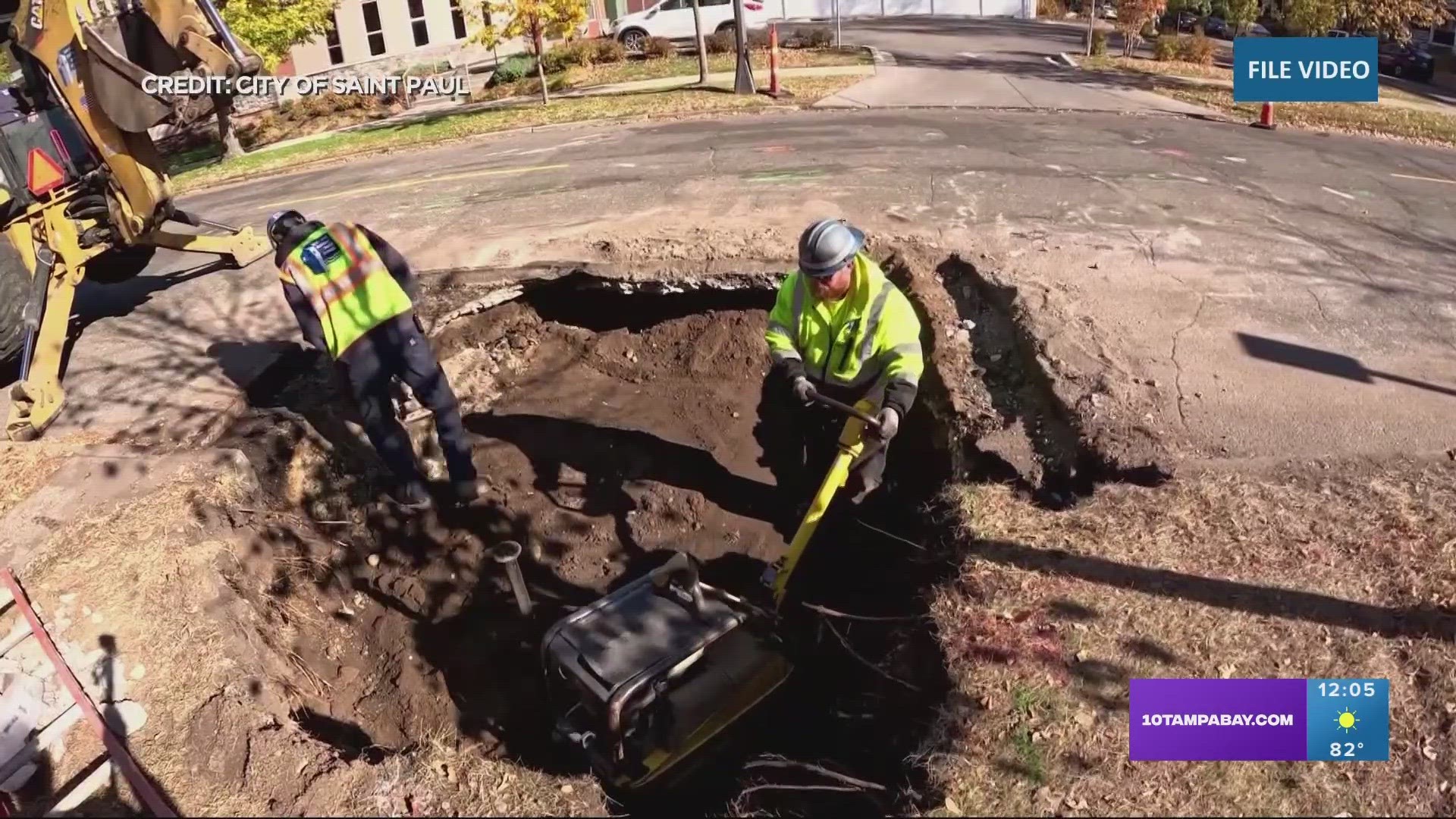WASHINGTON — Millions in the U.S. could currently be at risk of consuming toxic material through their drinking water, according to a new survey released by the Environmental Protection Agency (EPA). The report found there are more than 9 million lead service lines – known to be a "significant source" of lead contamination – used to carry drinking water to homes throughout the nation.
The Drinking Water Infrastructure Needs Survey and Assessment, conducted in 2021 as part of requirements under the Safe Drinking Water Act, looked at more than 3,600 public water systems across the country and its territories. Based on those results, EPA officials estimate that there are roughly 9.2 million lead service lines in the U.S.
Every state has at least a few thousand lead pipes, but two states stand out for their estimated numbers. Florida leads the nation with an estimated 1.16 million lead pipes, accounting for 12.62% of the country's total makeup. Illinois ranks second, with a little over 1 million pipes.
Lead pipes are known to pose a health hazard to those who rely on them for water, and are "typically the most significant source of lead in the water," according to the EPA.
"In homes with lead pipes that connect the home to the water main, also known as lead services lines, these pipes are typically the most significant source of lead in the water," the EPA says, adding that it's believed no amount of lead contamination can occur without health effects.
"Lead is a toxic metal that can be harmful to human health even at low exposure levels," the agency said. "Lead is persistent, and it can bioaccumulate in the body over time."
Children, babies and fetuses are most at risk of being impacted by lead exposure, with even low levels being linked to nervous system damage, learning disabilities, hearing impairment and other complications. Adults who are exposed could see cardiovascular, kidney and reproductive problems.
The Biden administration announced in 2021 that it will use $15 billion from the bipartisan infrastructure bill to replace all of the lead water pipes in the country within the decade. Vice President Kamala Harris said at the time of the announcement that "there is no reason" millions of people should still be exposed. According to the White House, as many as 10 million homes rely on lead service pipes and 400,000 schools and child care facilities are also at risk of exposure.
Based on their findings, the EPA estimated that the nation will need $625 billion to revamp drinking water infrastructure, a 32% increase from the estimate determined in their last assessment four years prior. More than half of that money will need to go toward water distribution and transmission, the agency said.
With the release of the EPA's findings, the White House has already announced funding for states to improve their respective situations. In all, $6.5 billion will be provided to states for drinking water infrastructure upgrades, the White House said, with nearly $3 billion of that money going to "lead service line identification and replacement."
Florida – the state with the most lead lines in the nation – will receive more than $376 million, and Illinois will receive $332 million.
"Every community deserves access to safe, clean drinking water," EPA Administrator Michael Regan said in a press release. "...We have an unprecedented opportunity to revitalize America's drinking water systems, support the Biden-Harris Administration's goal of removing 100% of lead pipes across our country, and protect communities from PFAS pollution."
Last month, the EPA proposed for the first time a set of national standards for some per- and polyfluorinated substances (PFAS), known as "forever chemicals" because of the significant amount of time it takes for them to break down. If approved, the standards would apply to six of the thousands of manmade PFAS, which have been linked to serious health issues, including cancer.
"EPA's proposal to establish a national standard for PFAS in drinking water is informed by the best available science, and would help provide states with the guidance they need to make decisions that best protect their communities," Regan said. "This action has the potential to prevent tens of thousands of PFAS-related illnesses and marks a major step toward safeguarding all our communities from these dangerous contaminants."

